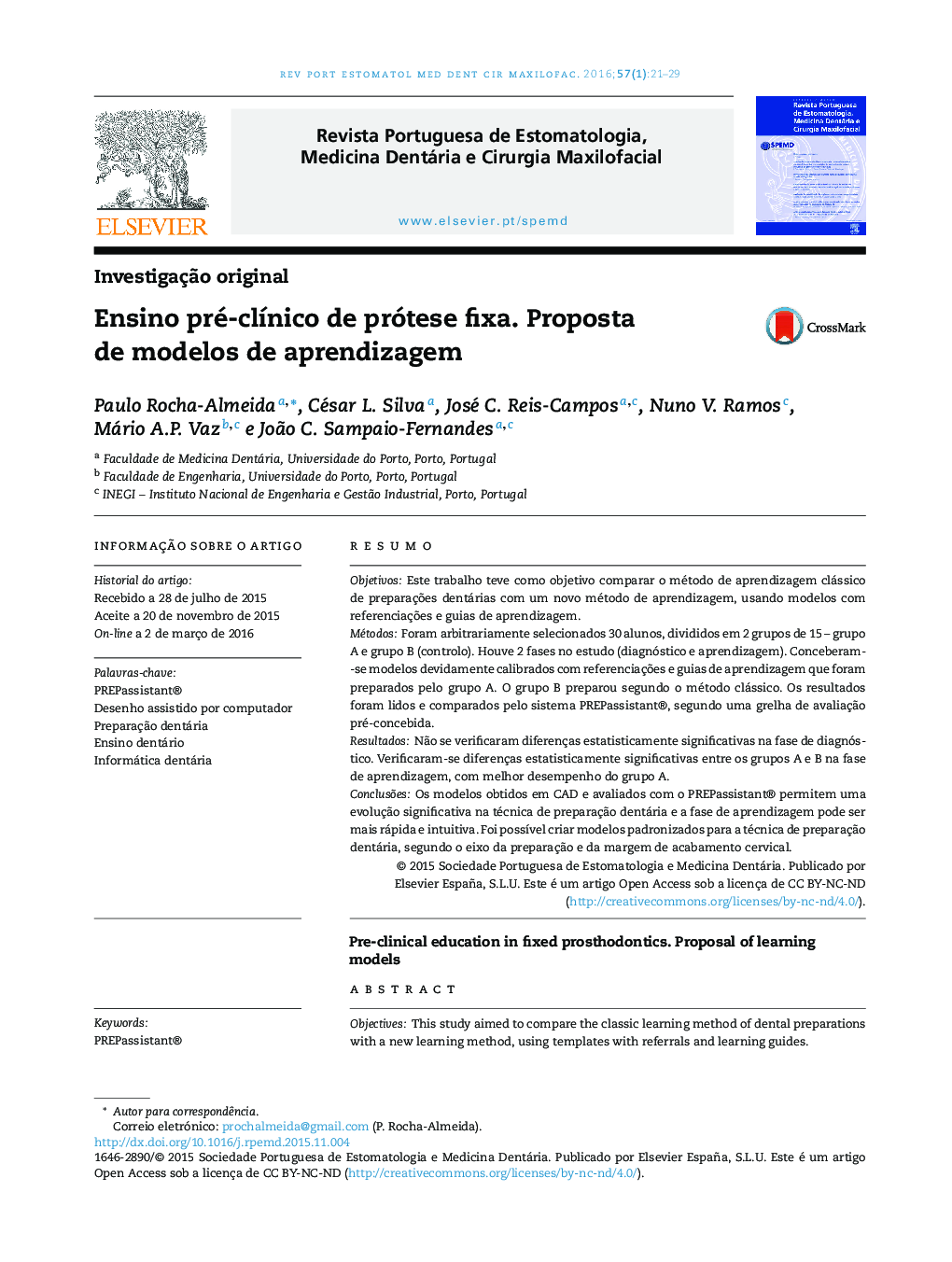| Article ID | Journal | Published Year | Pages | File Type |
|---|---|---|---|---|
| 3173294 | Revista Portuguesa de Estomatologia, Medicina Dentária e Cirurgia Maxilofacial | 2016 | 9 Pages |
ResumoObjetivosEste trabalho teve como objetivo comparar o método de aprendizagem clássico de preparações dentárias com um novo método de aprendizagem, usando modelos com referenciações e guias de aprendizagem.MétodosForam arbitrariamente selecionados 30 alunos, divididos em 2 grupos de 15 – grupo A e grupo B (controlo). Houve 2 fases no estudo (diagnóstico e aprendizagem). Conceberam‐se modelos devidamente calibrados com referenciações e guias de aprendizagem que foram preparados pelo grupo A. O grupo B preparou segundo o método clássico. Os resultados foram lidos e comparados pelo sistema PREPassistant®, segundo uma grelha de avaliação pré‐concebida.ResultadosNão se verificaram diferenças estatisticamente significativas na fase de diagnóstico. Verificaram‐se diferenças estatisticamente significativas entre os grupos A e B na fase de aprendizagem, com melhor desempenho do grupo A.ConclusõesOs modelos obtidos em CAD e avaliados com o PREPassistant® permitem uma evolução significativa na técnica de preparação dentária e a fase de aprendizagem pode ser mais rápida e intuitiva. Foi possível criar modelos padronizados para a técnica de preparação dentária, segundo o eixo da preparação e da margem de acabamento cervical.
ObjectivesThis study aimed to compare the classic learning method of dental preparations with a new learning method, using templates with referrals and learning guides.MethodsIn this study, 30 students were selected arbitrarily, divided in two groups of 15 ‐ Group A and Group B (control). There were two phases (diagnostic and learning). Conceived models were calibrated with referrals and learning guides that were prepared by group A. Group B prepared according to the classical method and results were read and compared by the PREPassistant® system according to a preconceived evaluation grid.ResultsThere were no statistically significant differences in the diagnostic phase. In the learning stage, differences between groups A and B were statistically significant; being the group A the best performing group.ConclusionsThe models obtained in CAD and evaluated by the PREPassistant® allow significant developments in dental preparation technique and the learning phase can be more quickly and intuitively developed. It was possible to create standardized models for the dental preparation technique according to the axis of the preparation and of the cervical margin finishing.
